I’m excited to write this piece for you because Mr. Abraham’s Spice Garden is a must every time we visit Kerala. As a cook, it’s the kind of place that I dreamed of experiencing because it is chockablock full of spices.
I had always longed to see where and how spices grew. I imagined a spice GARDEN would be a cross between a vineyard and an orchard. I had it all wrong.
Spices, in nature, grow in the jungle and that is what Mr. Abraham’s spice garden looks like. A wild overgrown jungle.
This is nature’s reality. Left on their own, in this perfect climate, plants will just grow madly. Mere English words like garden are no match for this level of fecundity.

This spice garden is especially authentic because Mr. Abraham – HIMSELF – planted every single bush, tree and shrub in the two acres that surround his home. He did this as a small boy, in 1952, with his father and grandfather. Almost 70 years of tender loving care have gone into making it what it is today.
In the garden
When we arrived, before we could even get out of our car, Mr. Abraham was out of his home and walking up the driveway to meet us. His bungalow is bright white with eggplant purple trim. Set against the backdrop of profuse greenery it pops like an orchid in bloom.
Carved wooden statues of animals hug the base of the home. Mr. Abraham carved them all. Flowers in pinks, oranges, greens and reds grow up the walls. As we admired them, Mrs. Abraham popped her head out and waved shyly from the door. She was busy cooking up lunch with her daughter-in-law that we’d enjoy together later.
When I asked Mr. Abraham how much time he spends in his garden he told us, “I’m always in here. Even in the rain, I’m here with an umbrella. It is my life; – my joy.”

I’ve spent four of the most calm and peaceful days of my life in this garden with him. I can see his touch everywhere we turn.
The paths are covered in a leaf mulch that’s soft underfoot. Green fronds of cardamom plants or banana plants leaves form low archways in some parts while jackfruit, cinnamon and eucalyptus trees tower over us in other areas. There are tarps protecting tender transplants that he’s nursing along and propagating.
Mr. Abraham has watched each and every plant grow to this lush state. He built deep stone-walled water reservoirs to capture the monsoon rains and dug canals and irrigation ditches to feed his garden in the dry times. He did it all by hand, stone-by-stone.
We found a stack of little beehives up against a shed in a sheltered corner near the main house. They are for the tiny black bees he so patiently keeps. They only produce about a cup of honey per year but, along with the spiders and other insects that help keep this slice of Eden healthy, Mr. Abraham adores them.

The man
I know he’s in his 70s but with his strength and vitality he seems much younger. He’s a study in aging well. Thick silver hair covers his head, adorns his moustache, laces his eyebrows and sprouts from his ears. But beyond that, his eyes are soft amber brown, clear and bright. His skin is smooth and clear with nary a wrinkle. He moves with graceful ease, his body lean and muscular. He’s downright limber.
It’s rare to meet someone so connected with the nature’s rhythms. It gives him a calmness. He is by very definition grounded unlike most of us who are so far removed from soil and life.
Favourite plants?
Mr. Abraham has a soft spot for jackfruit trees. When we climbed a little hill at the back of the garden he touched the bark of an oak-like tree and pointed to a heavy load of what looked like giant knobbly melons hanging from it. His grandfather insisted the family plant this jackfruit tree first when they started the garden all those years ago.
He told Mr. Abraham, in times of drought, when no other food will grow, the jackfruit tree will keep a village from starving. Jackfruits can produce a 10 kilogram fruit in the worst of times. The average size in Mr. Abraham’s organic garden is 22 kilos (about 50 pounds) and his record was a whopping 42 kilograms (93 pounds)! The trees will grow to be 100 feet tall and can last 100 years. No wonder they say, planting a tree is planting a legacy.
Mr. Abraham also loves his cardamom forests, which produce enough of the world’s third most expensive spice each year (saffron and vanilla bean are first and second, respectively) to employ 20 people. He tells us that cardamom, a small green grape-looking spice, is from the ginger family and is good for clearing lungs and for circulation.
The Abraham family can harvest year round though the plants produce less in the hot summer months. Each of the plants is allowed to grow for a full year before picking. They are picked during year two and then they die off to be replaced automatically by the root system.
When I asked him where the cardamom pods are dried, he smiled and made a gesture to follow him. We ducked and weaved through the growth to a building I hadn’t noticed before. Really no more than a sturdy shed, it held a powerful furnace and blower system to circulate air and heat. Mr. Abraham explained that the cardamom pods spend 24 hours here at 52 degrees Celsius. Then they are bagged and stored, ready for sale.
Mr. Abraham also grows pepper, piper longum, ginger, turmeric, cinnamon, allspice, nutmeg and mace, cloves, holy basil (tulsi), betel, tamarind, curry leaf plants, lemon grass, vanilla, cocoa, gherkins, green beans, chilies, tomatoes, squash, eggplants, limes, pineapple, papaya, coffee and six kinds of banana trees in this garden. Orchids and other exotic flower species grow in pots, cracks, crevices and every nook and cranny you care to look in as you walk around the property.
Lunch and shopping!
After soaking in as much of life in the garden as we could, before lunch with Mrs. Abraham, we paid his son Justin a visit in the Abraham’s organic spice shop. We stocked up on pepper, cardamom, cinnamon, cloves, beautiful lacy orange strands of whole mace and nutmeg still in its protective shell.
When we sat for lunch, Mr. Abraham poured us a drink of pink water made from Pathimugan bark (Indian redwood). It’s an Ayurvedic thirst quencher that is said to purify the bloodstream and prevent or treat kidney disorders, skin diseases, cholesterol, and diabetes. I couldn’t help think Mr. Abraham will live forever. He merely chuckled when I told him so.
We lunched on banana leaf plates and helped ourselves to chicken stew, plantain curry, rice and cabbage and carrot thoran. There were fresh paratha to mop up the spicy gravies of the food and after we had our fill, Mr. Abraham showed us how to make our dessert.
He spooned a little rice and curd (yogurt) mixture onto his banana leaf. Then he peeled a banana and chopped it onto the curd. Finally, like an elf with fairy dust, he sprinkled some cane sugar over the top to give it a little sparkle.
Farewell
As we left, after going back to the spice shop to buy some of that Pathimugan bark, I gave Mr. Abraham seeds for heirloom tomatoes and string beans that I had brought from Canada. His eyes sparkled with delight. What else would you gift a man that lives in paradise but a little more of what he calls paradise?
In the coming posts, we’ll share a more detailed tour of Mr. Abraham’s Spice Garden and a primer on spices. We’ll also share Mrs. Abraham’s delicious coconut-infused cabbage and carrot thoran.
I think about these people and this Eden all the time. I constantly wonder how soon can I go back? If you have the chance to go, GO!
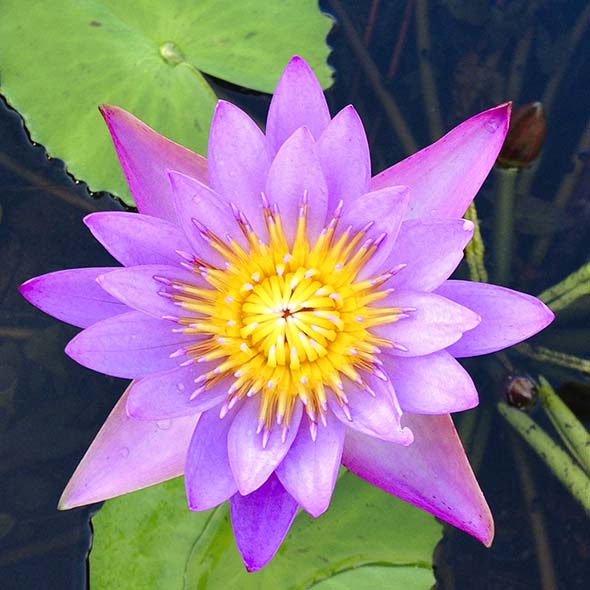
Gratitude
Thanks to Mr. Abraham and his family for hosting us during our visit to Kumily and to the KTM Society and Travel XS for sponsoring our travel throughout South India in 2016.
All words and photos are our own and were not shared with the sponsors before publication.

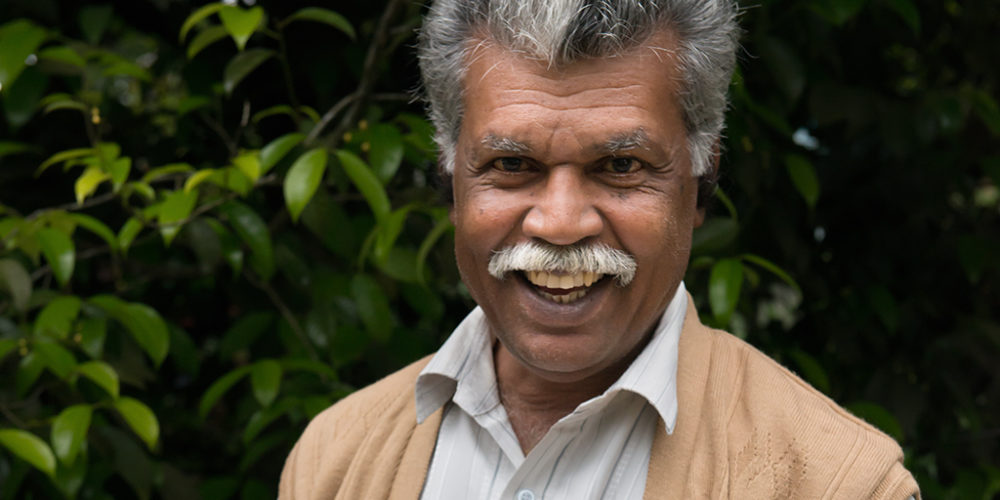
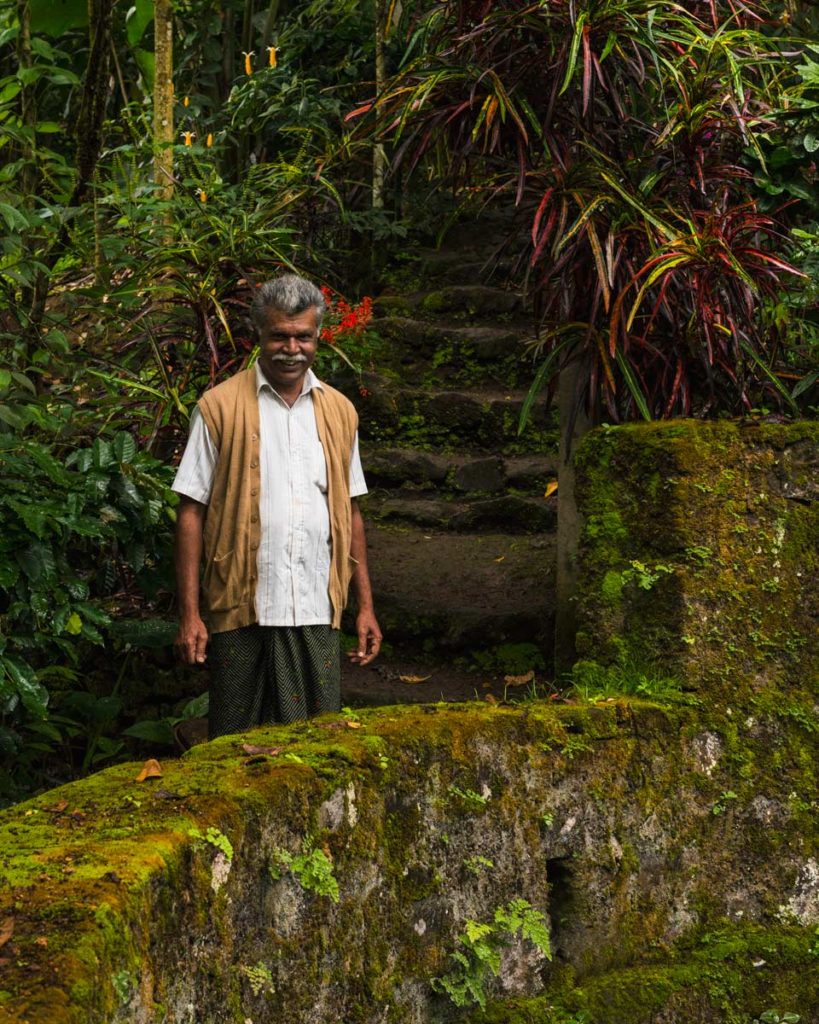
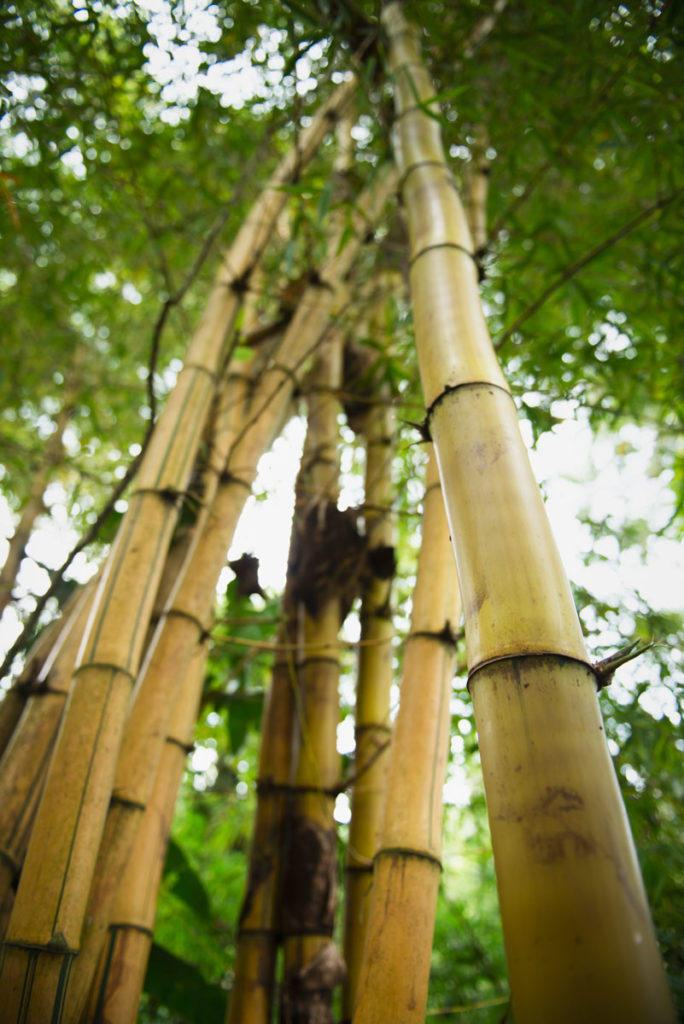
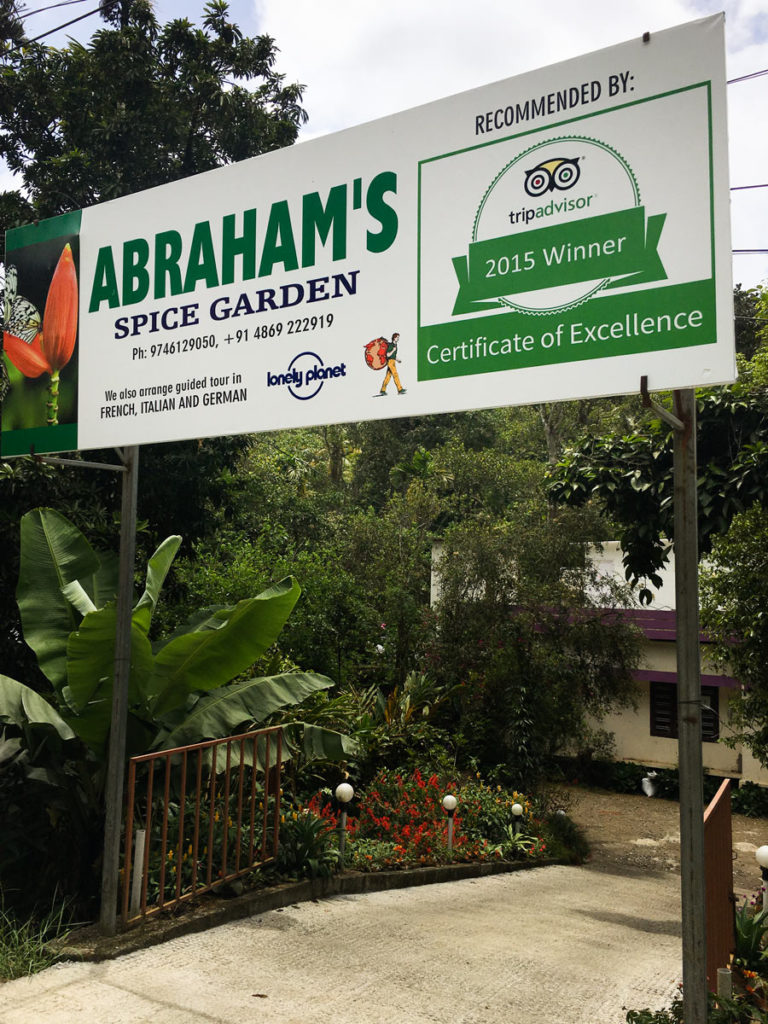
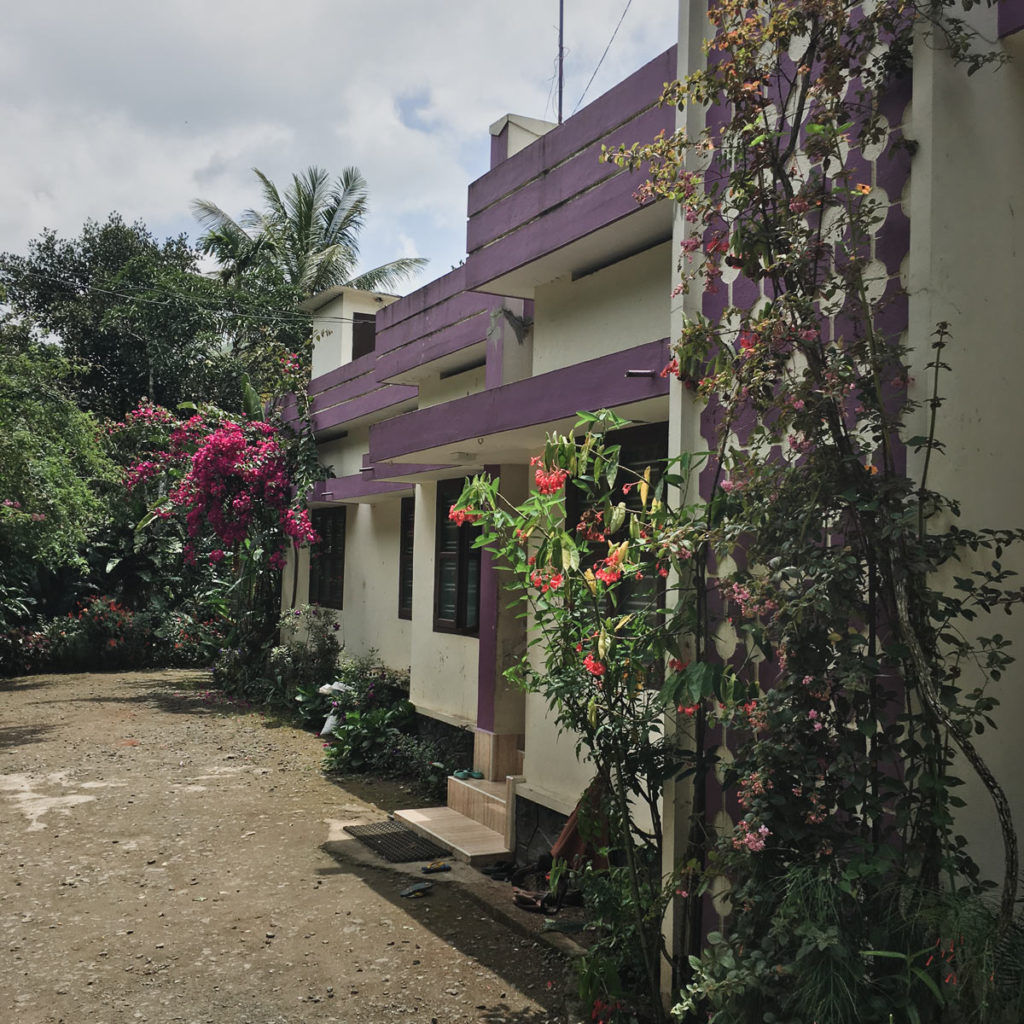
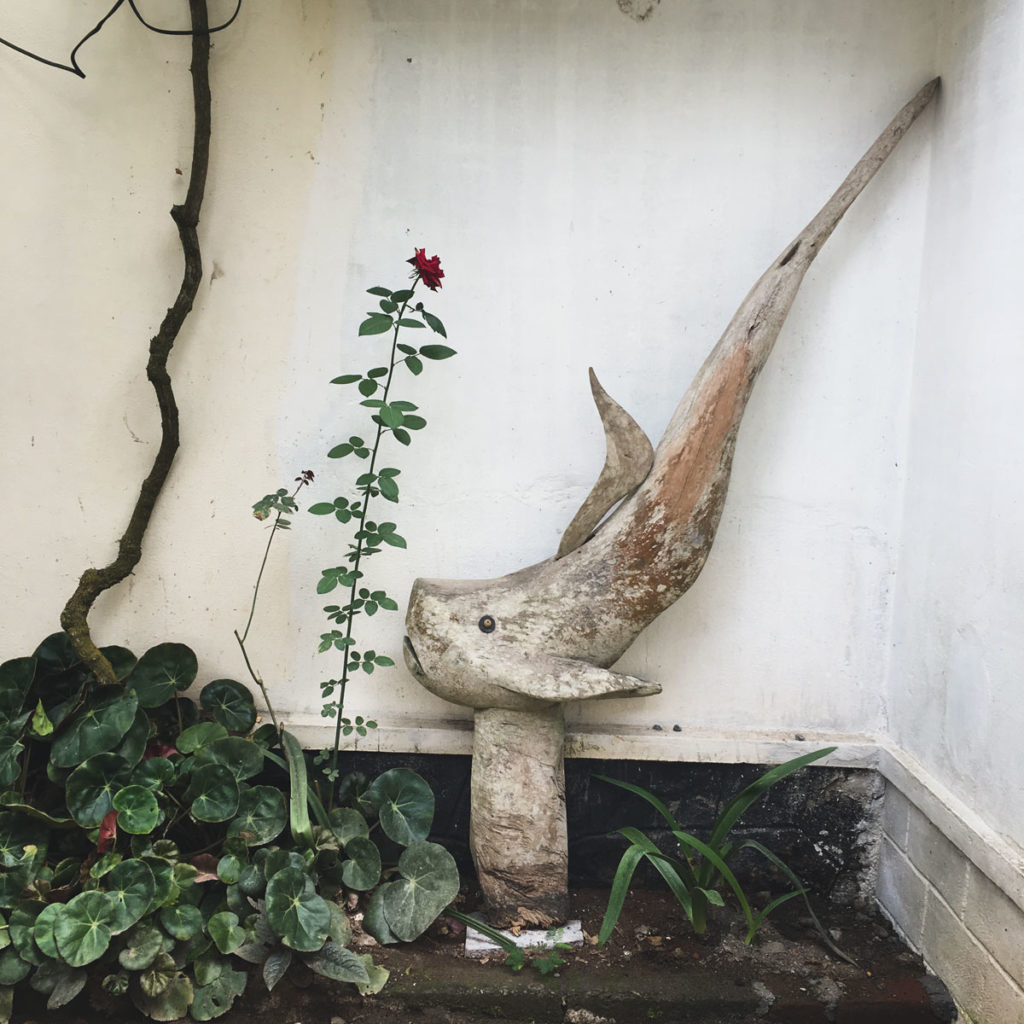
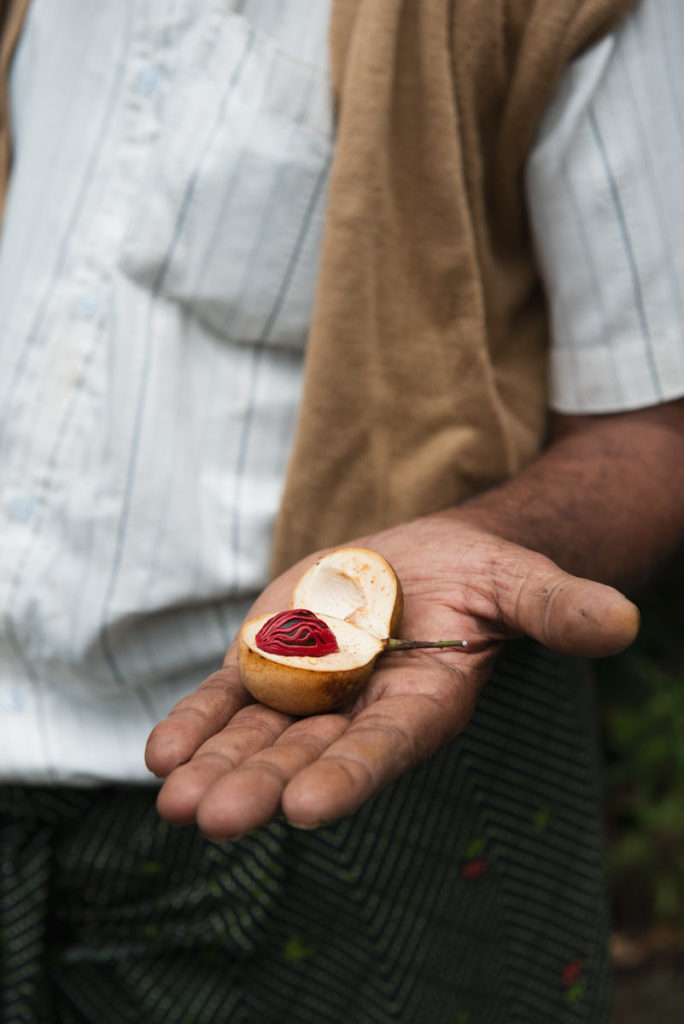
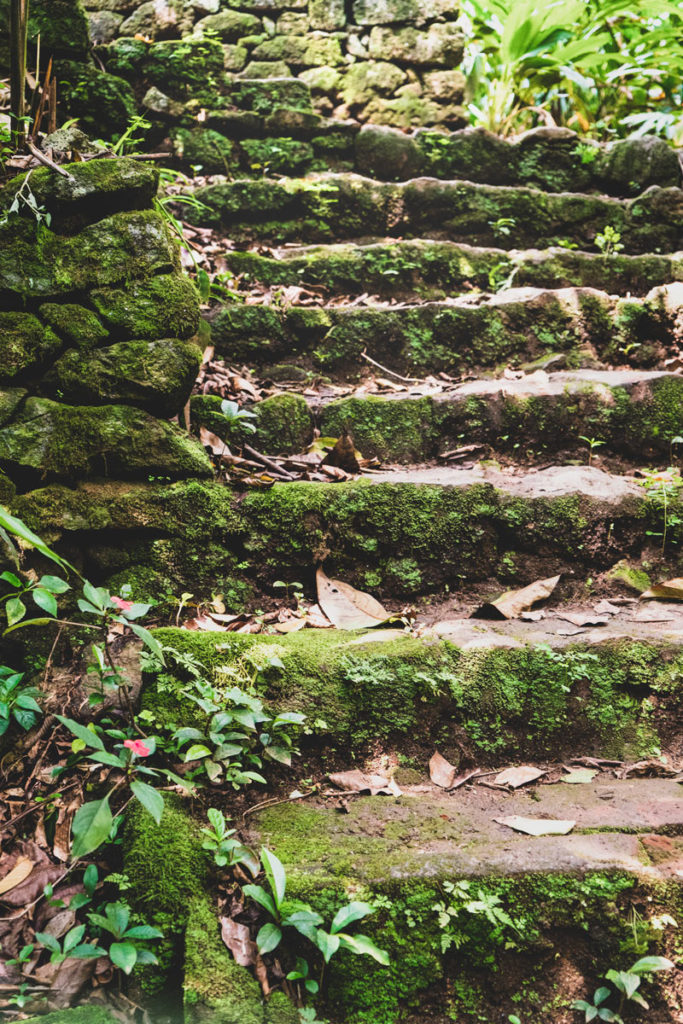
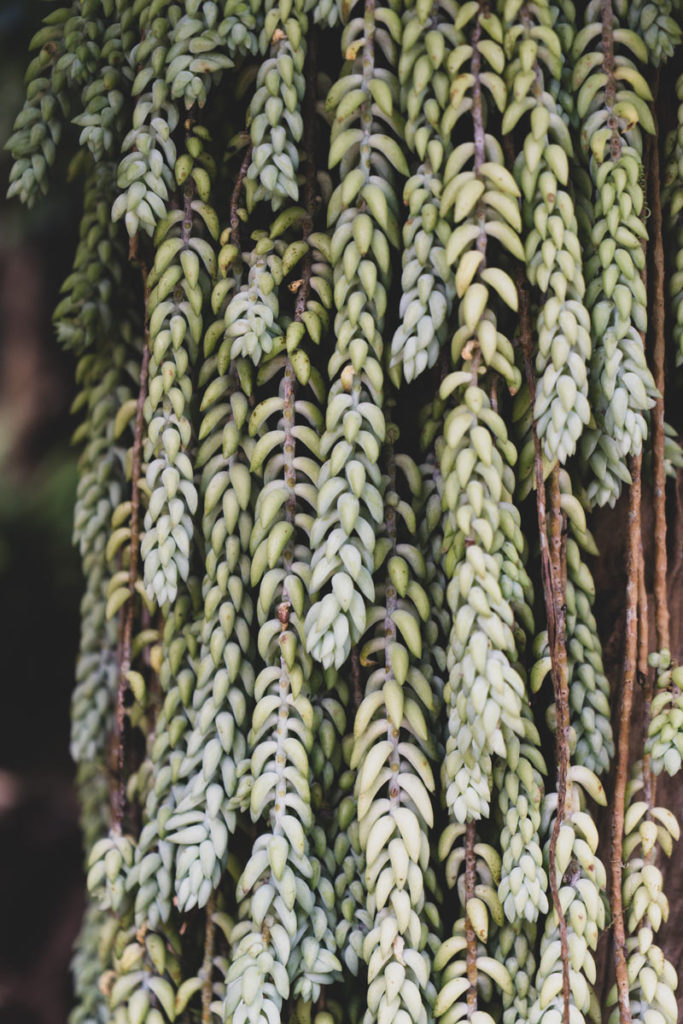
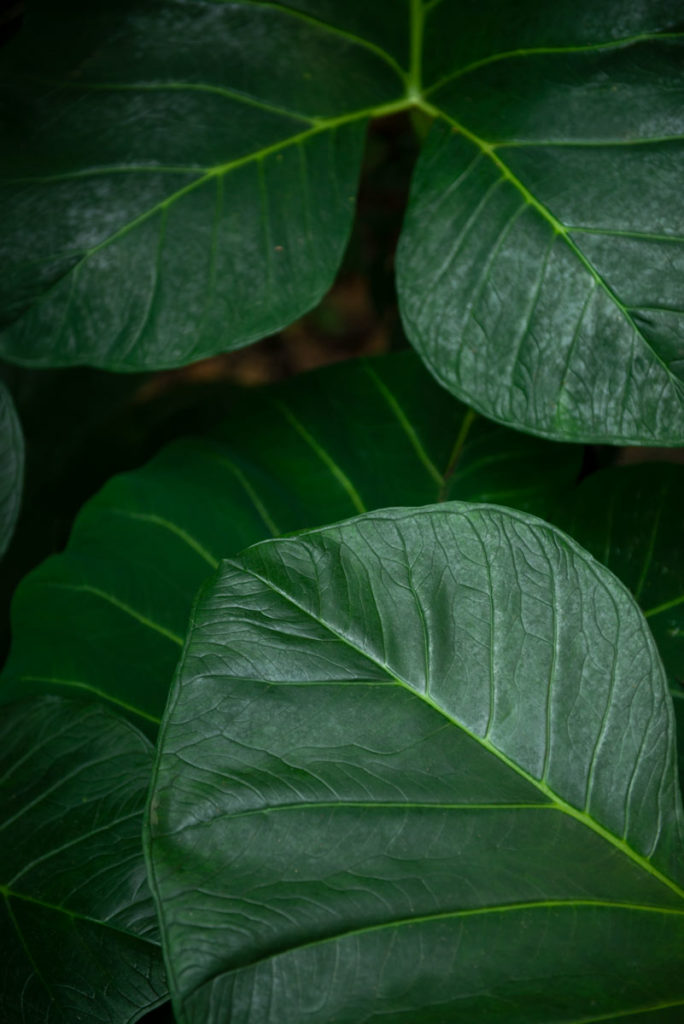
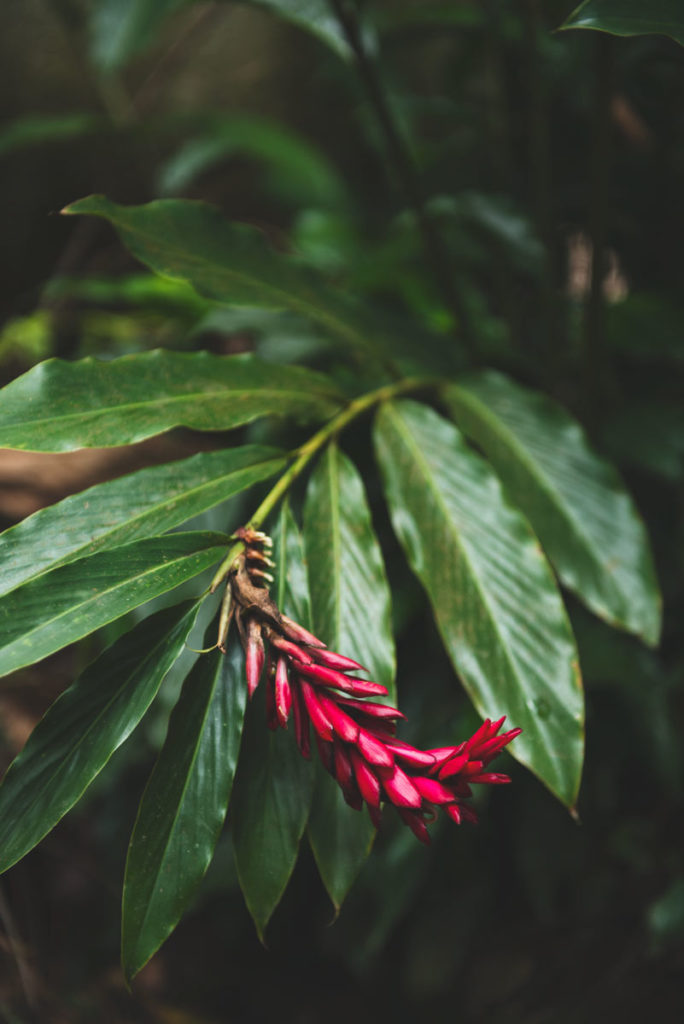
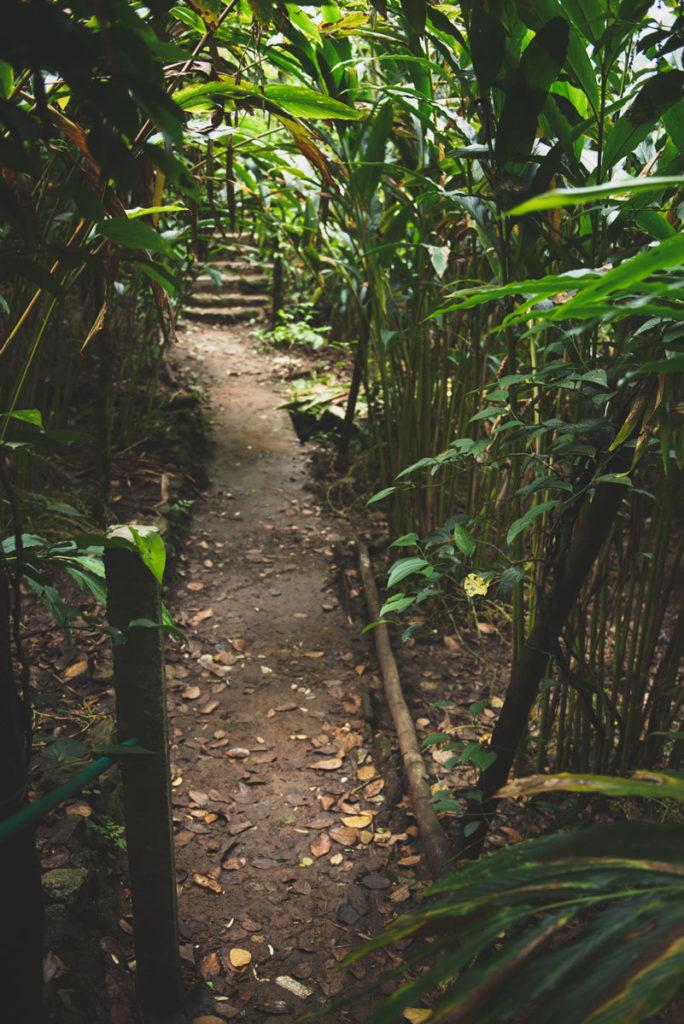
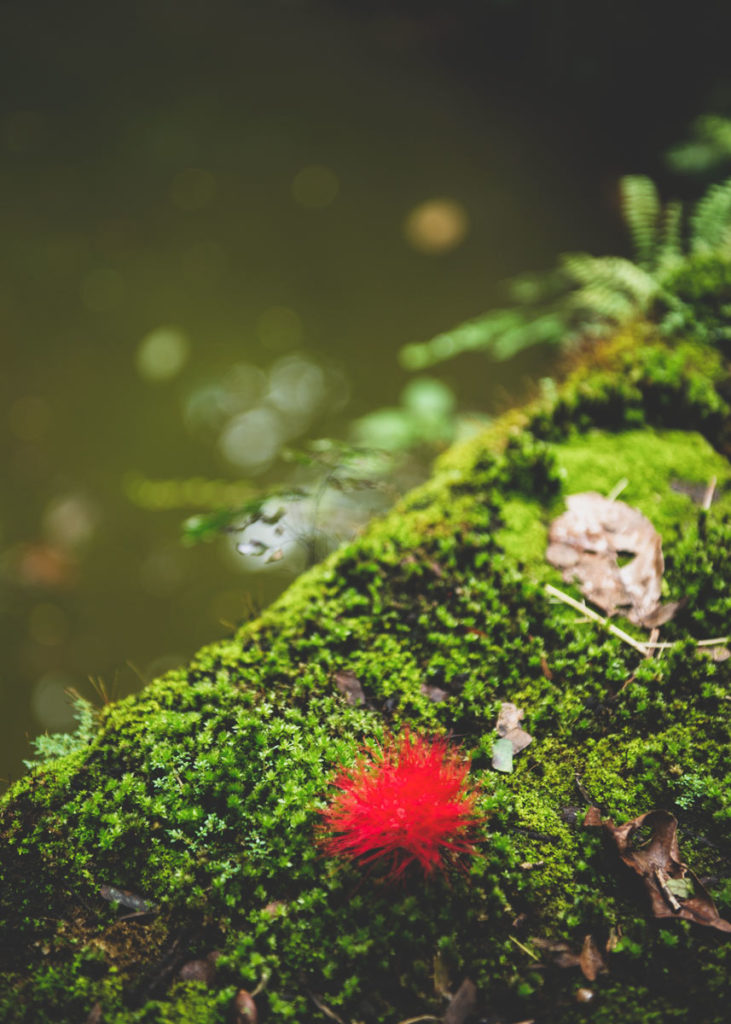
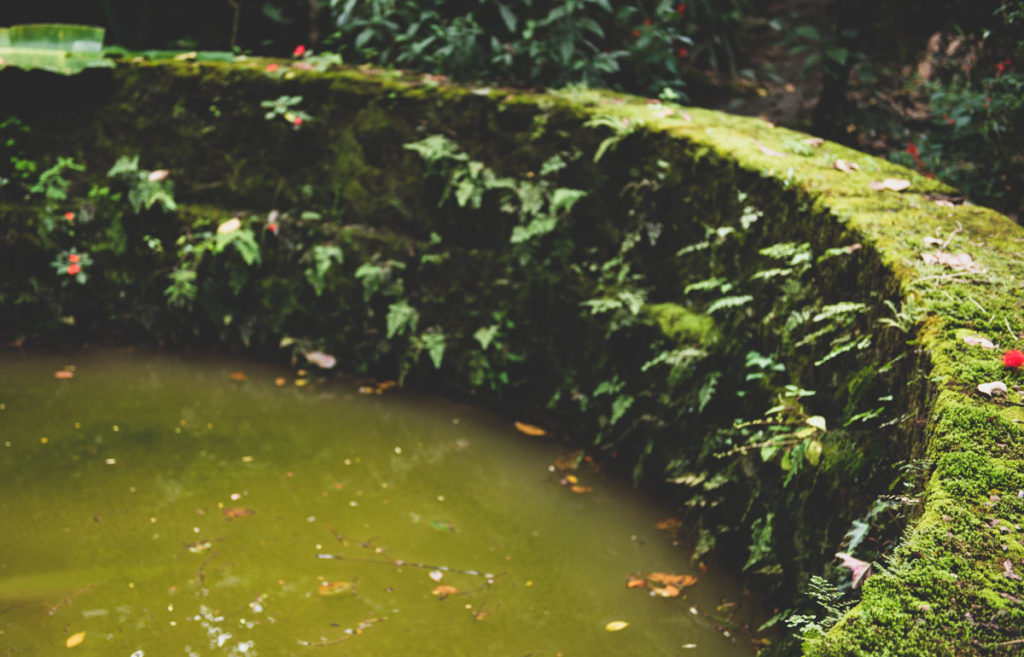
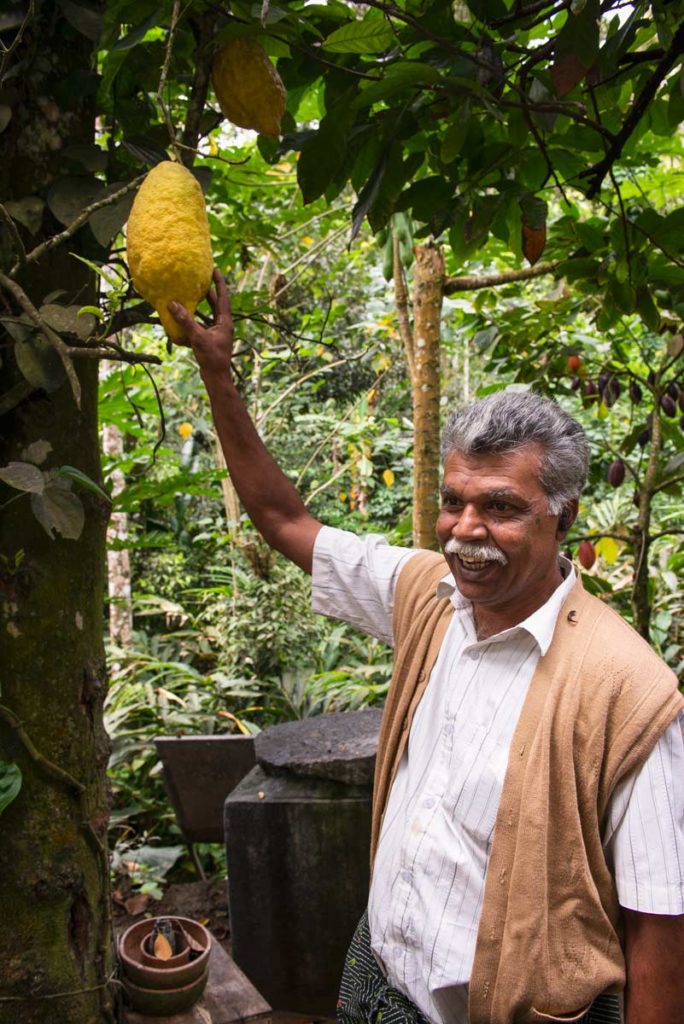
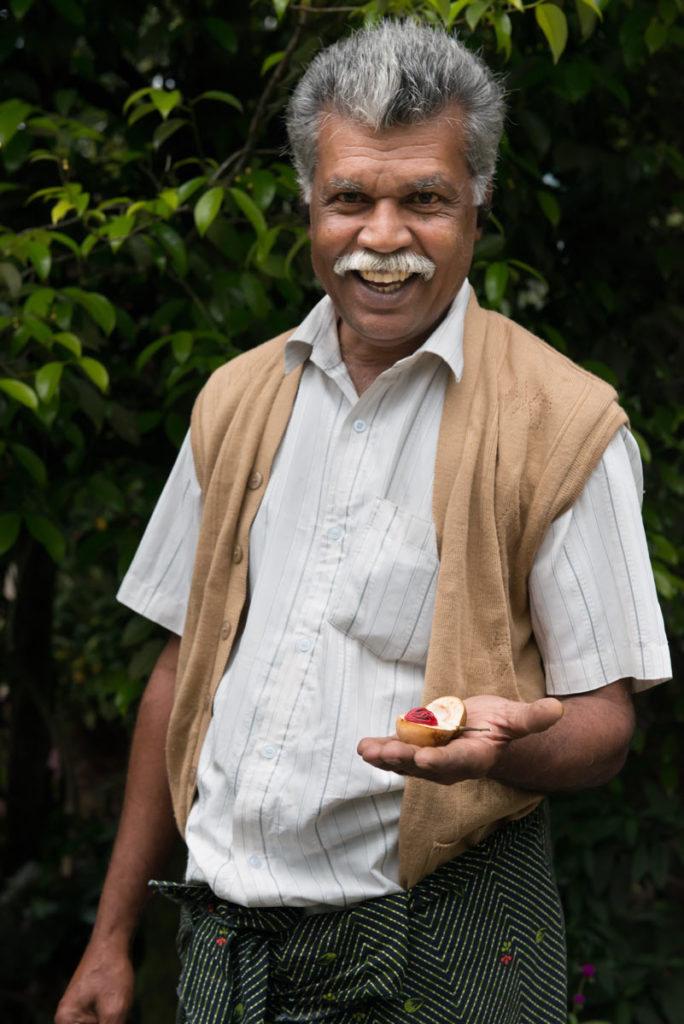
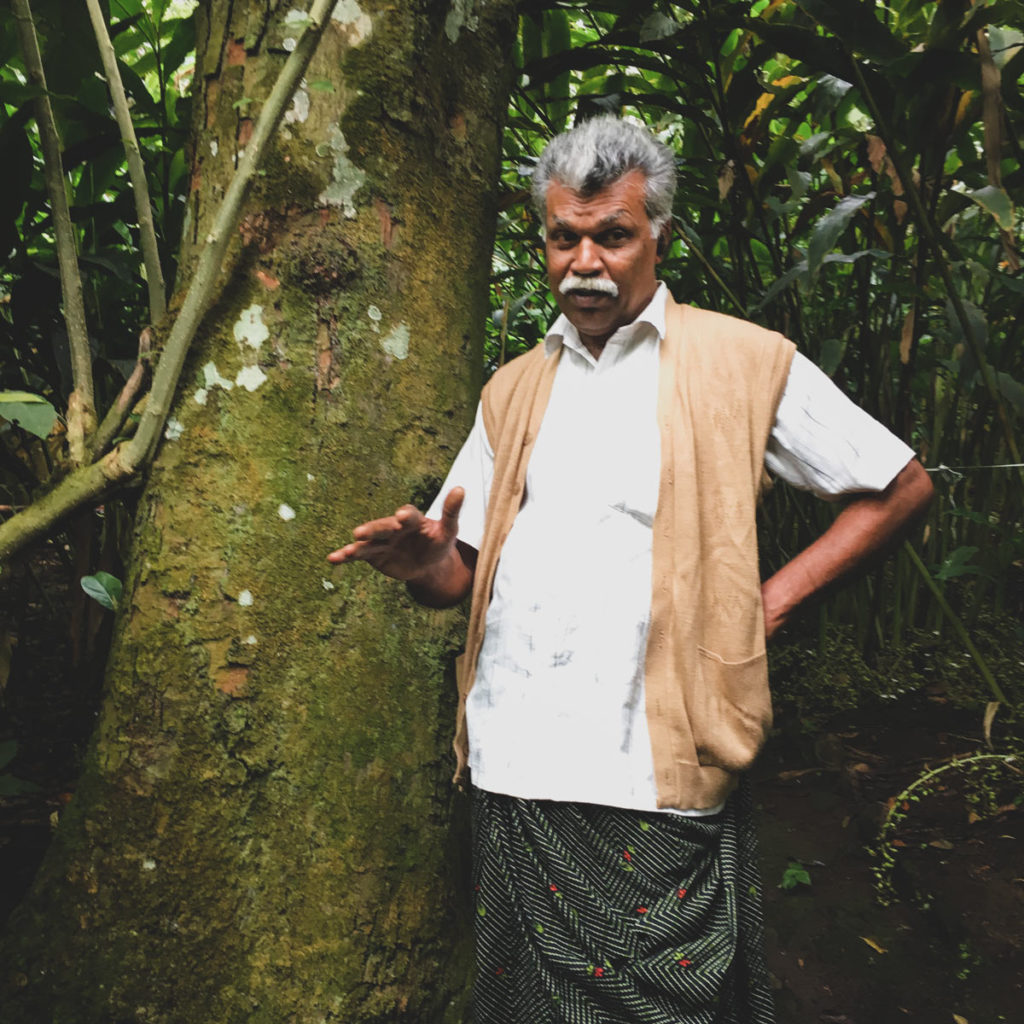
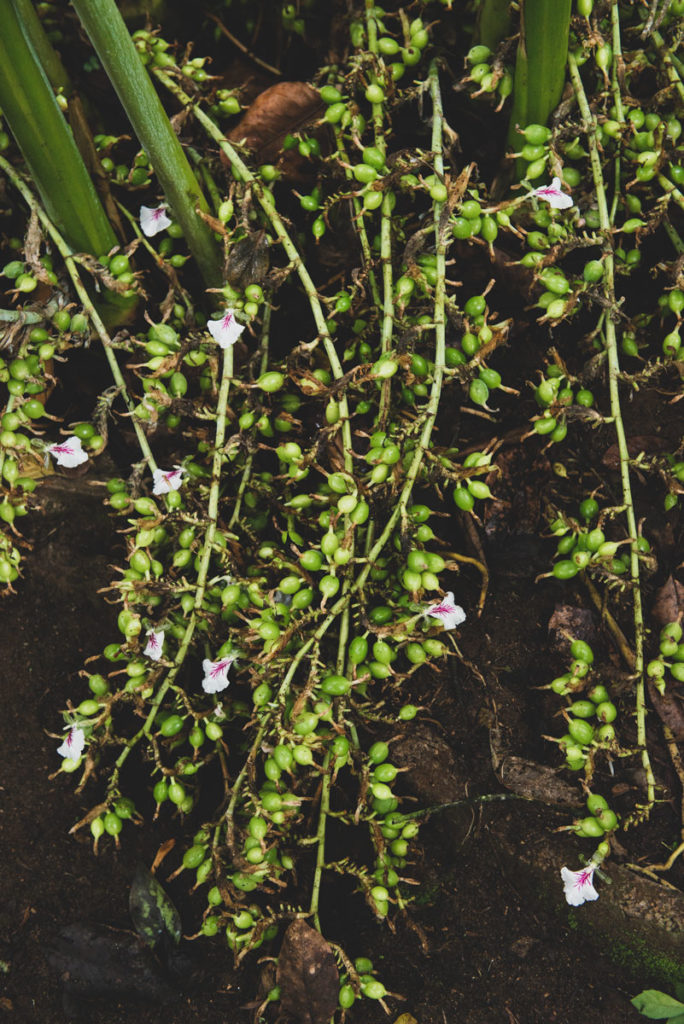
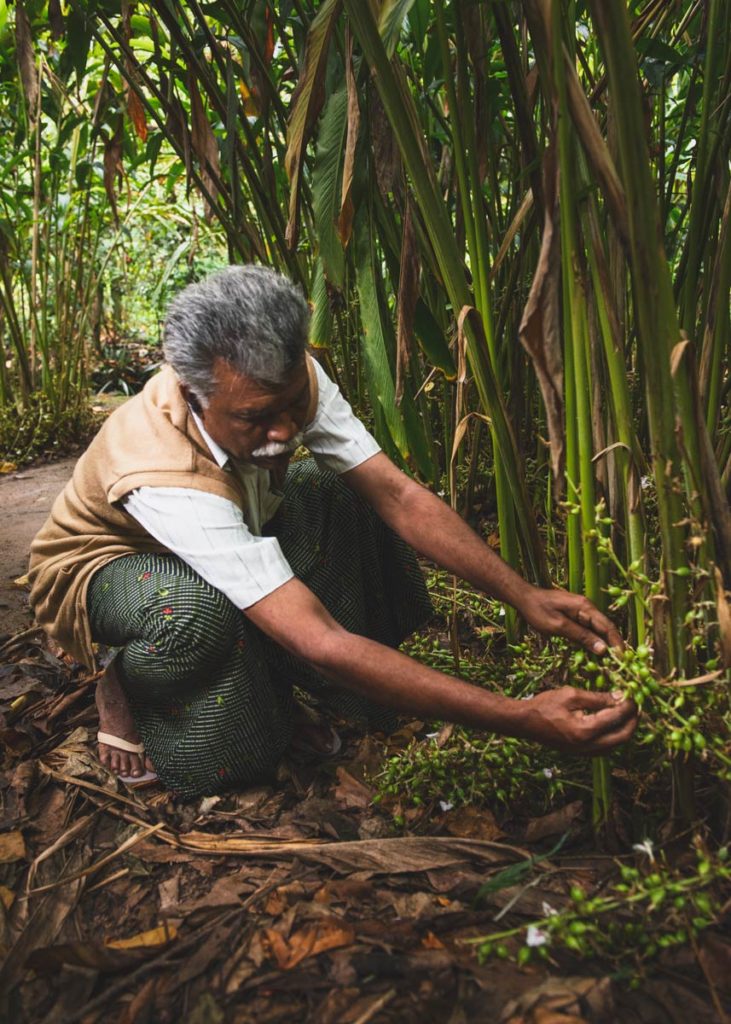
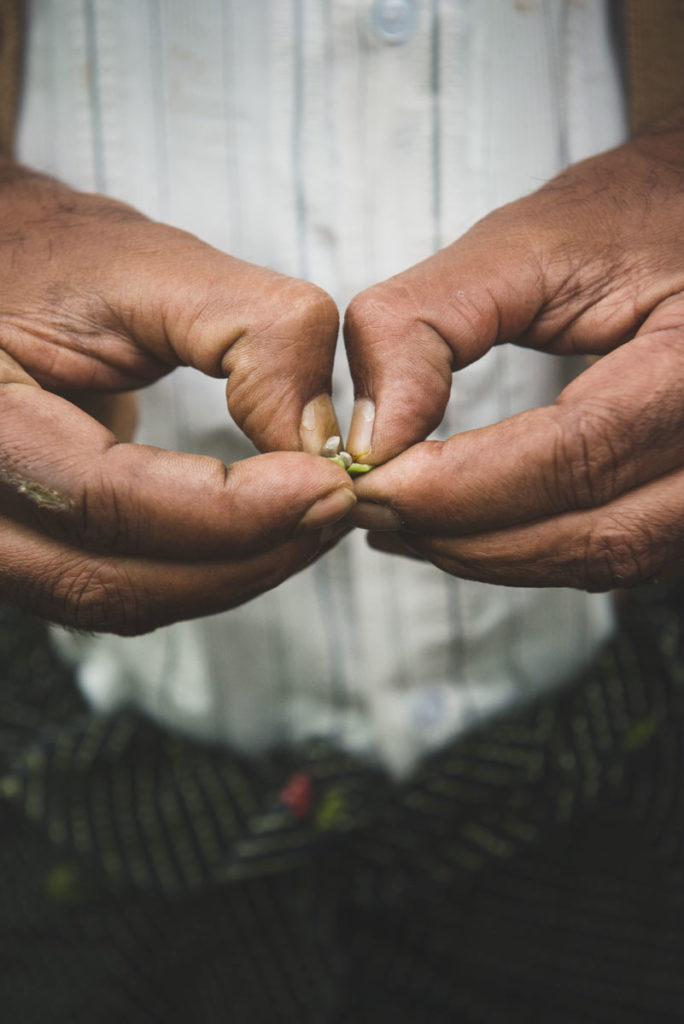
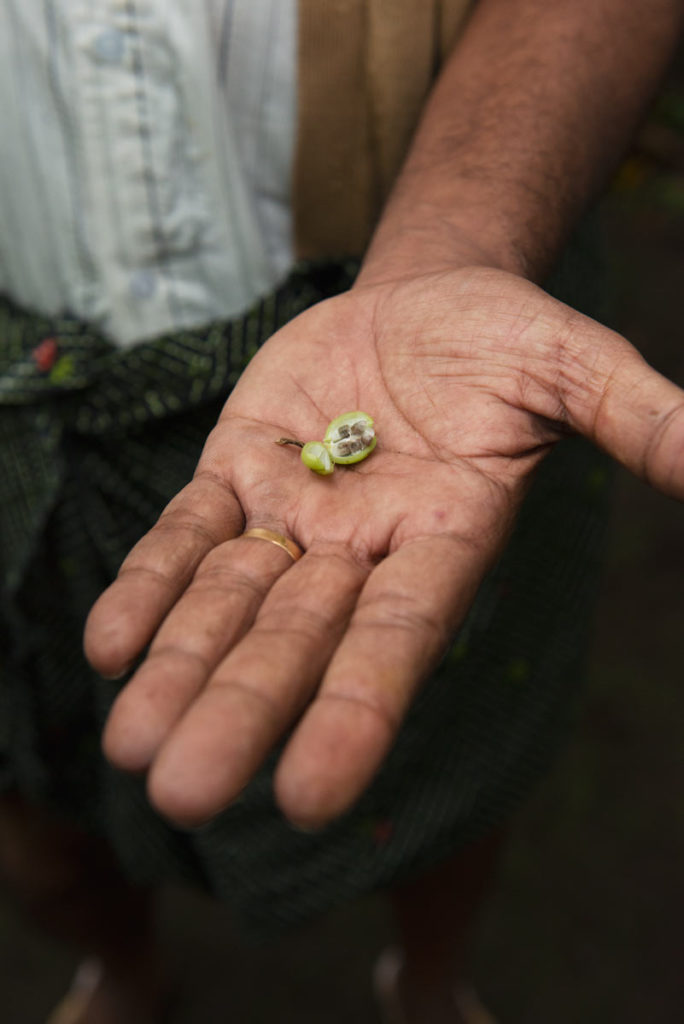
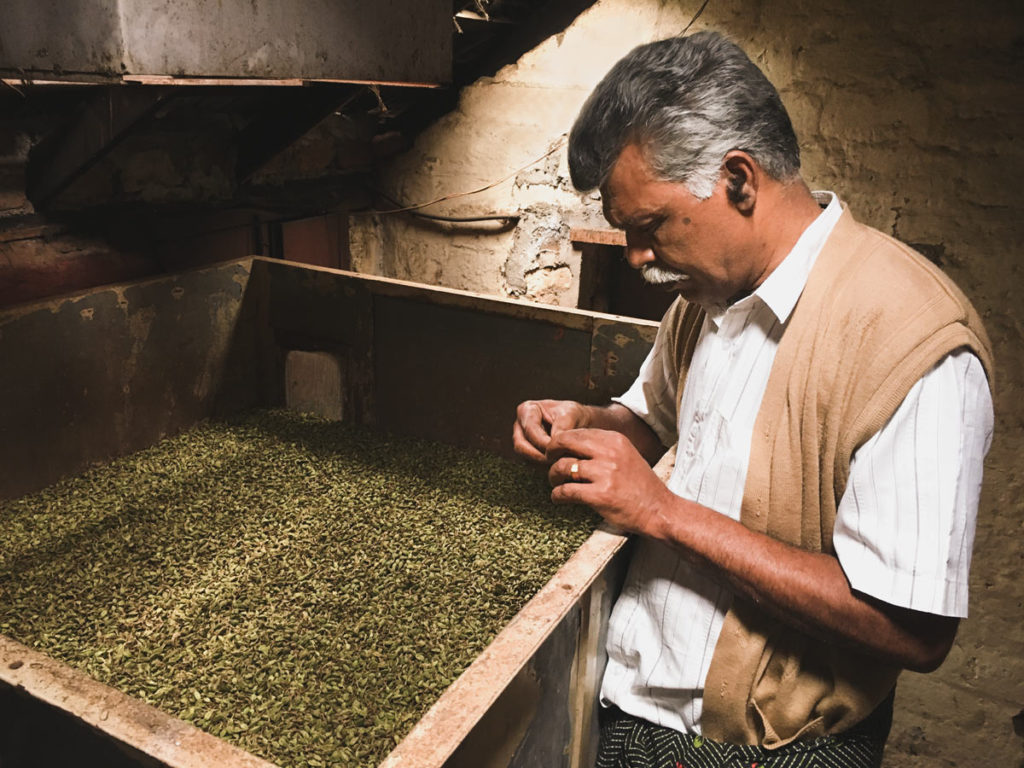
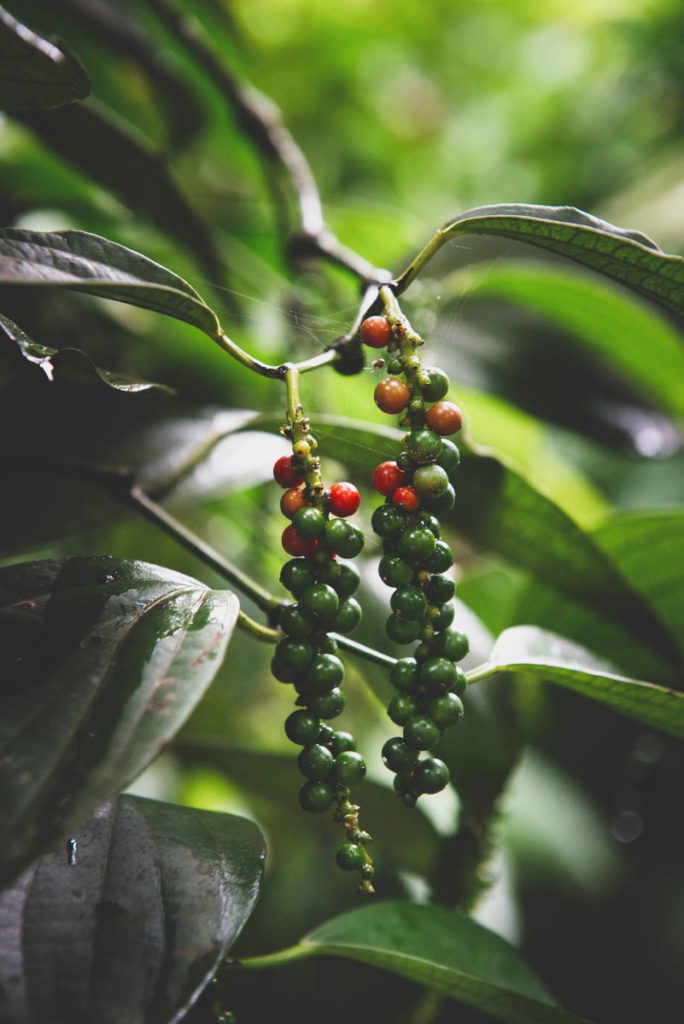
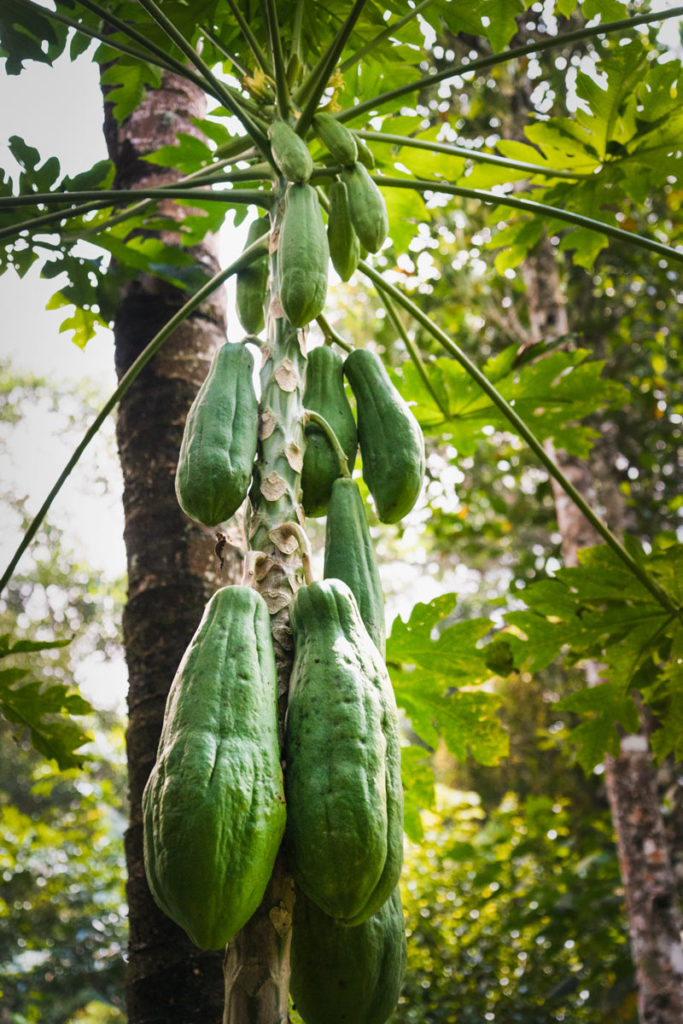
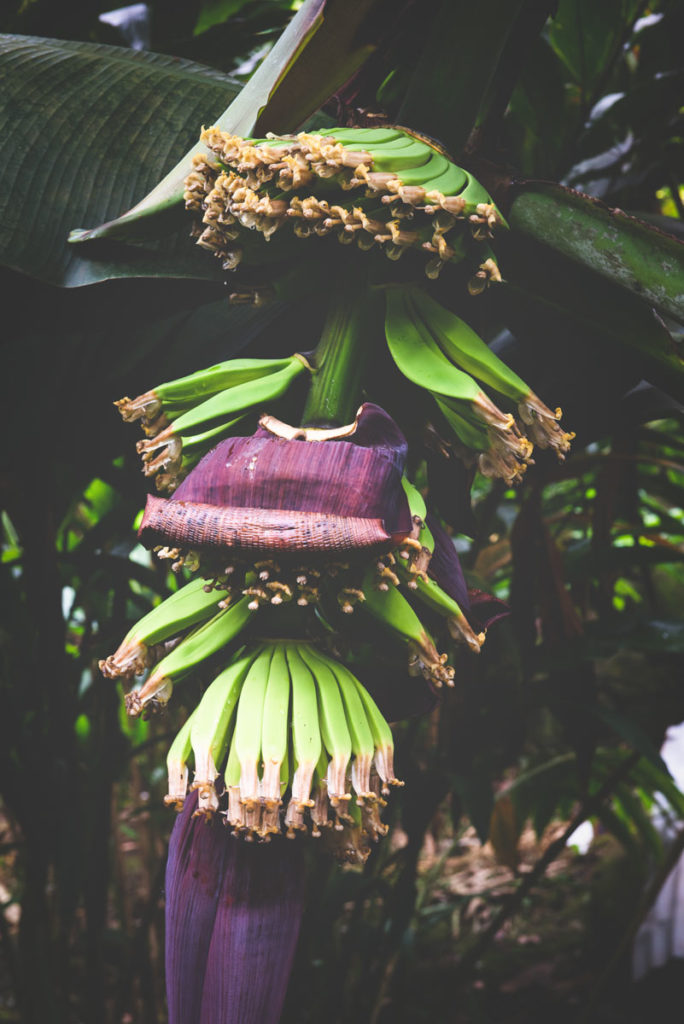
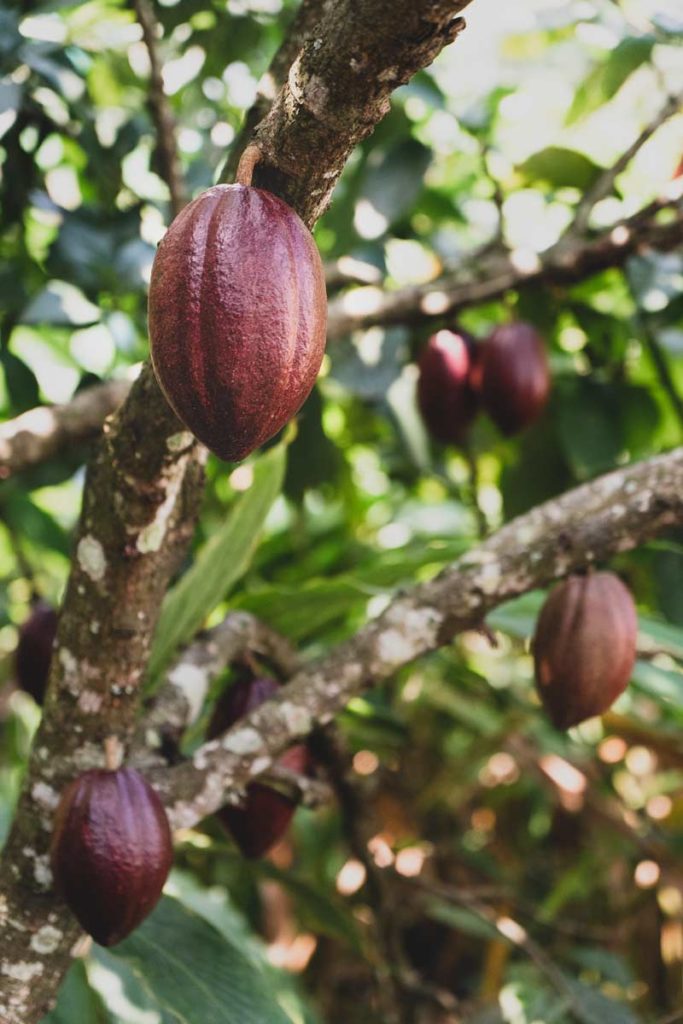
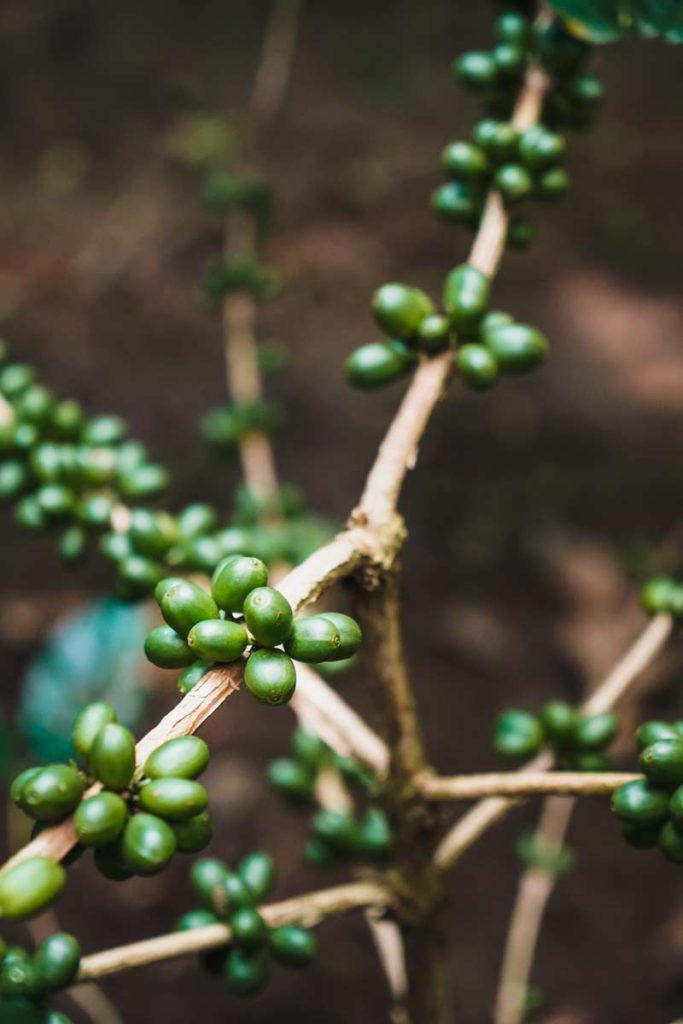
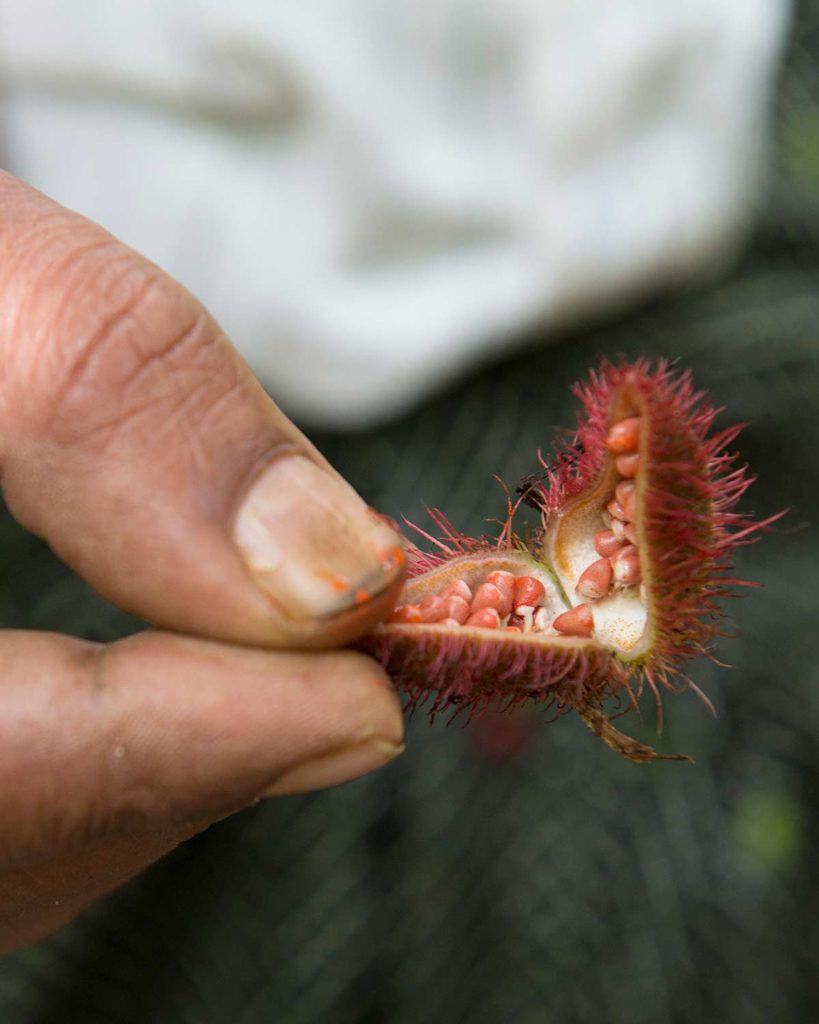
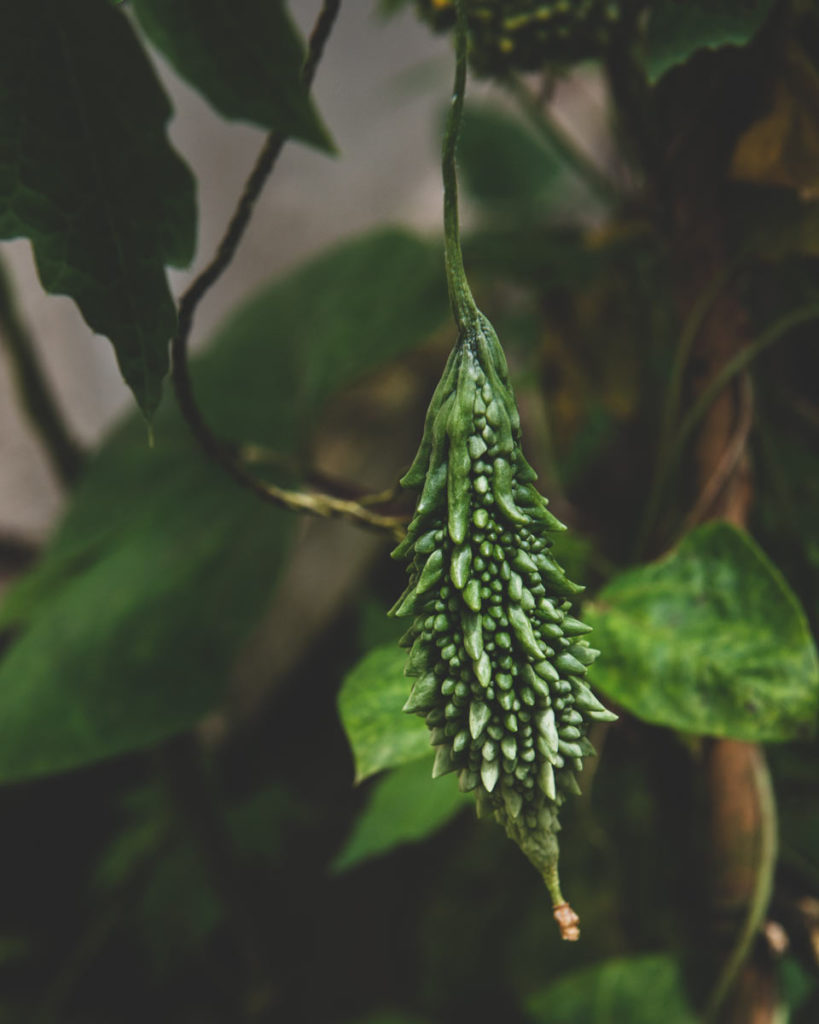
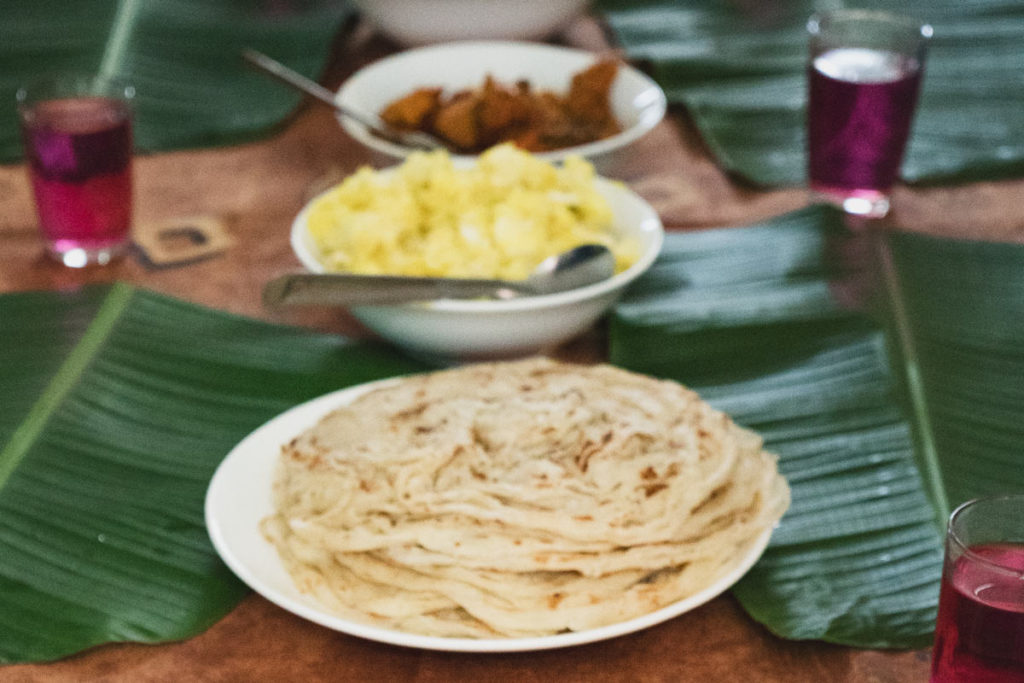
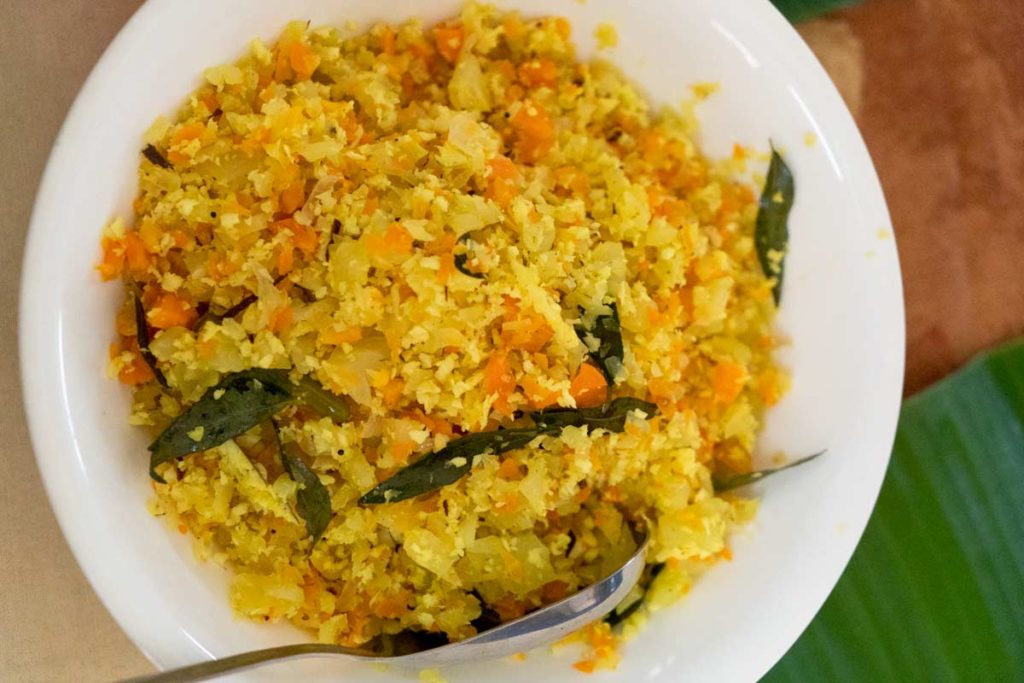
Thanks for the wonderful message
Abraham and family
Namaskaram Justin,
Thank you for reading the blog about your Dad and your family’s beautiful spice garden. Please stay well until we see you again.
With kindness,
Karen and Pauli-Ann